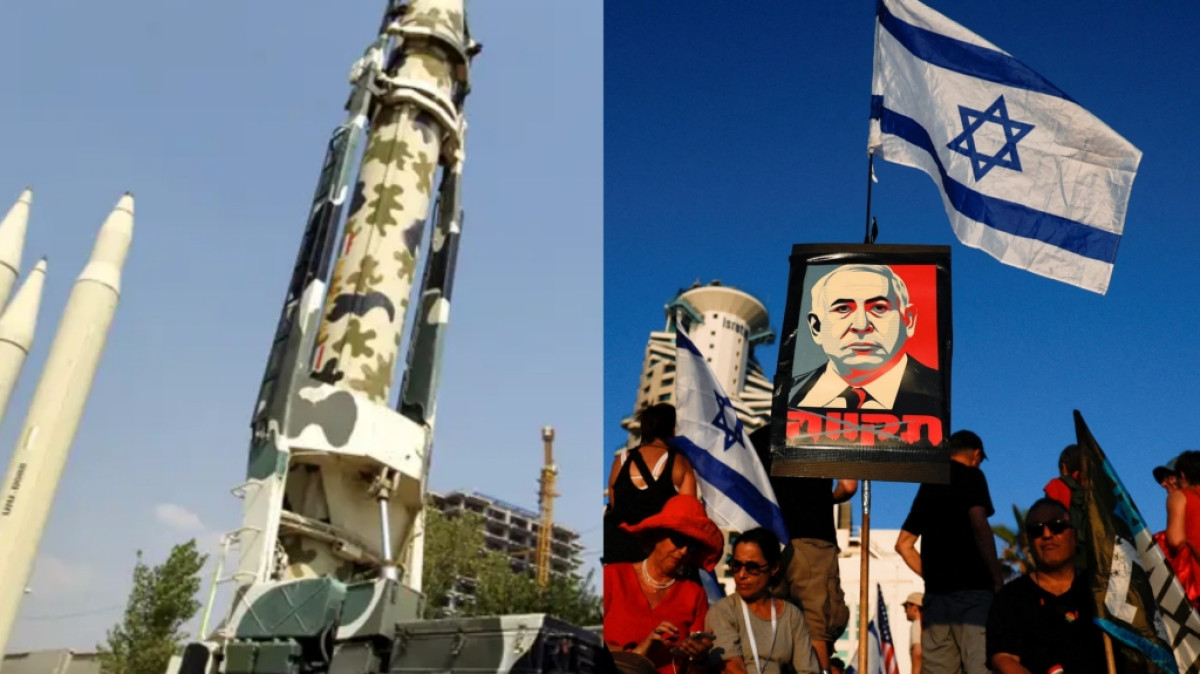Dimensions and Trajectories of Houthi-Israeli Escalation
- 25 Jul 2024


In recent days, a significant escalation has emerged between the Houthis and Israel, marking a qualitative shift in their ongoing conflict.
Previously governed by indirect operations and proxy engagements, the confrontation has moved into a more direct and intense phase. This new stage is characterised by direct confrontations, moving away from reliance on allies or peripheral engagements. The Houthis and Israeli forces are engaging more directly, a departure from the strategies seen since November 2023.
The Houthis, who had previously focused on indirect operations in the Red Sea and Israeli peripheries, are now directly confronting Israeli forces. Similarly, Israel has shifted from utilising allied policies to direct military responses. This escalation signifies a substantial change in both parties' strategic calculations, indicating a potentially more volatile phase in their conflict.
This shift in the escalation between the Houthis and Israel raises essential questions about its short- and medium-term implications for their confrontation, as well as its broader impact on regional stability.
This development comes amid ongoing Israeli military operations in the Gaza Strip, now in their tenth month, and increasing indications of a potential expanded war against Hezbollah in Lebanon.
The recent escalation between the Houthis and Israel has entered a more dangerous phase, characterised by direct and in-depth confrontations. The most prominent indicators of this shift in the path of escalation can be addressed as follows:
The Houthis Targeting Tel Aviv: On July 19, 2024, the Houthis announced their targeting of Tel Aviv. According to reports, the Yemeni militia targeted Tel Aviv by launching a ballistic missile and four drones. A ballistic missile and three drones were shot down, while the fourth drone reached Tel Aviv, killing one person and wounding about seven others. The Houthis, through their military spokesman Yahya Saree, announced that the operation was carried out using a new drone developed and named “Jaffa.”
Some military estimates suggested that the drone used in the attack was an advanced version of the “Samad 3” drone, which was announced in 2018 and first used in 2019. It has a range of between 1,500 and 1,700 km.
Direct Israeli Attacks on the Port of Hodeidah: In response to the recent Houthi attack, Israel launched focused air strikes on the Yemeni port of Hodeidah on July 20. Israeli fighter jets targeted energy infrastructure, striking about 20 fuel storage facilities, most within the port complex and some near the port. The port's cargo unloading capabilities were also targeted, with cranes used to unload goods from ships to the dock being deliberately attacked.
According to reports, the Israeli attack resulted in about 80 casualties, both dead and injured. Following the attack, Israeli army spokesman Daniel Hagari stated that the port attacked by Israeli aircraft is used as "a main supply route to deliver Iranian weapons from Iran to Yemen, including the drone used in the recent attack on Tel Aviv."
This reflects Israel's effort to frame the strike as a "response to the recent Houthi targeting of Israeli territory and Tel Aviv," a narrative aimed at avoiding widespread regional escalation amid ongoing tensions in Gaza and Lebanon.
Houthi Response to Israeli Attack: Following the Israeli attack on the port of Hodeidah, the Houthis announced a specific operation targeting Eilat, using several ballistic missiles.
In a related context, in the early hours of July 21, 2024, Hebrew media reported an explosion in the Haifa area. Some Hebrew media outlets, such as "Israel Hayom," linked these explosions to the Houthis' threat to respond to the recent Israeli targeting of the port of Hodeidah. As a result, Israeli authorities announced the opening of an investigation into the causes of these explosions.
Implications of the Shift in Escalation between the Houthis and Israel
The recent escalation between Israel and the Houthis carries several significant implications, particularly regarding the transition to direct confrontations between the two sides. These implications can be outlined as follows:
Going Beyond Established Rules of Engagement: The recent Houthi-Israeli escalation indicates a departure from the traditional rules of engagement that had prevailed since November 2023, when the Houthis began their escalation. This shift has occurred on multiple levels.
The first level is the transition to direct targeting. Previously, Israel relied on allied operations against the Houthis, while the Houthis focused on Red Sea operations and targeting Israeli peripheries. Both sides have moved to execute specific operations in each other’s strategic depths.
The second level is reflected in the official statements from both parties, which suggest an increase in the intensity of clashes and escalation. However, both sides appear to be avoiding an open war of attrition, considering their respective regional and internal factors.
Israel’s Effort to Save Face: The recent Houthi attack placed Prime Minister Benjamin Netanyahu’s government in a difficult position domestically, especially given the failure of Israeli air defences and radars to detect and intercept the attack. Several key considerations can be identified in understanding Israel’s reaction:
The first is that the Israeli attack aimed primarily to restore deterrence against the Houthis. The loss of deterrence had encouraged the Houthis to target Tel Aviv and Israel’s strategic depth, a shift from the previous pattern of targeting southern Israel and peripheral areas, particularly Eilat.
Secondly, the nature of the targets attacked by Israel—fuel storage facilities and cargo unloading infrastructure—was not considered entirely strategic from a military perspective. This suggests the operation was more for show, reflecting Israel’s reluctance to enter an open war of attrition with the Houthis, especially under U.S. pressure to avoid such a conflict and given Israel’s preoccupation with the Gaza and Lebanon fronts.
Thirdly, despite Israel’s caution about turning the Houthi front into an open war, it remains a risk. This is evident in the statements of Israeli Defense Minister Yoav Galant regarding the potential for igniting broader conflict in the Middle East, especially considering Prime Minister Netanyahu’s political interest in prolonging the Gaza conflict and potentially opening new fronts.
Important Political Messages from the Houthis: The recent Houthi attack on Tel Aviv conveyed several significant messages from the organisation:
The first message is that the Houthis have developed military capabilities sufficient to target not only Israeli coastal ports and cities but also the Israeli interior. The second message is that the attack aimed to intensify internal pressure on Israeli Prime Minister Benjamin Netanyahu. This comes amid growing criticism of Netanyahu within Israel, where he faces accusations of mismanaging the ongoing conflict. Thirdly, the Houthis continue to position themselves on the regional stage, seeking to enhance their strategic value to their Iranian backers.
Limits and Trends of Escalation Between the Houthis and Israel
Recent developments in the escalation between the Houthis and Israel suggest two main scenarios:
The likelihood of this scenario depends on several key factors: the outcome of ongoing ceasefire negotiations in the Gaza Strip, potential developments in the conflict between Israel and Lebanese Hezbollah, and Iran’s approach to the evolving situation.
Several vital considerations support this scenario. First, significant American pressure to prevent escalation in the region is influenced by internal factors such as upcoming elections and Washington's broader regional calculations. Second, both the Houthis and Israel appear to share a mutual interest in avoiding an open war of attrition.
In general, several vital factors will closely influence the future trajectory of the Houthi-Israeli escalation. First, the outcome of the ongoing Gaza conflict, which has persisted for ten months, and the results of the ceasefire negotiations will be crucial. Second, potential developments on the northern front, particularly with indications that Prime Minister Netanyahu is prepared for a large-scale operation against Hezbollah, will play a significant role. Third, the sources and paths of Iranian-Israeli tensions will be necessary significantly, as these tensions extend beyond Iranian agents to encompass issues related to Iran’s nuclear program.
The stated views express the views of the author and do not necessarily reflect the views of the Center or the work team.
Comments